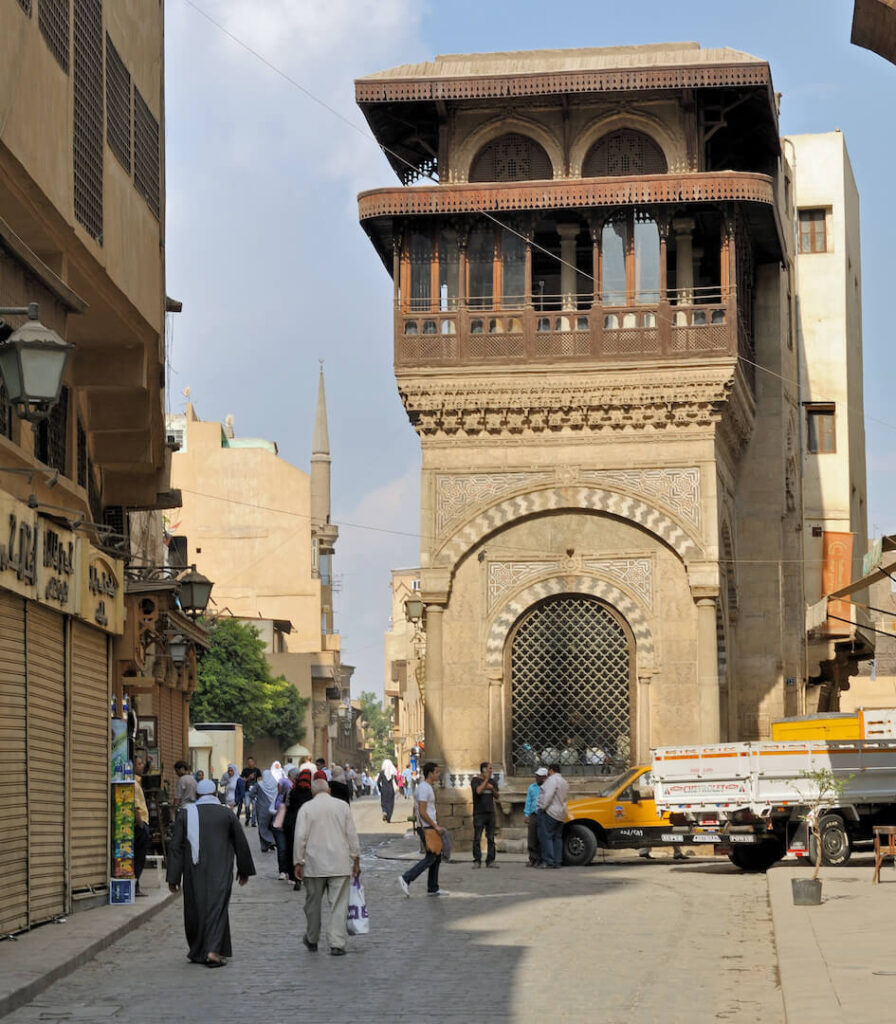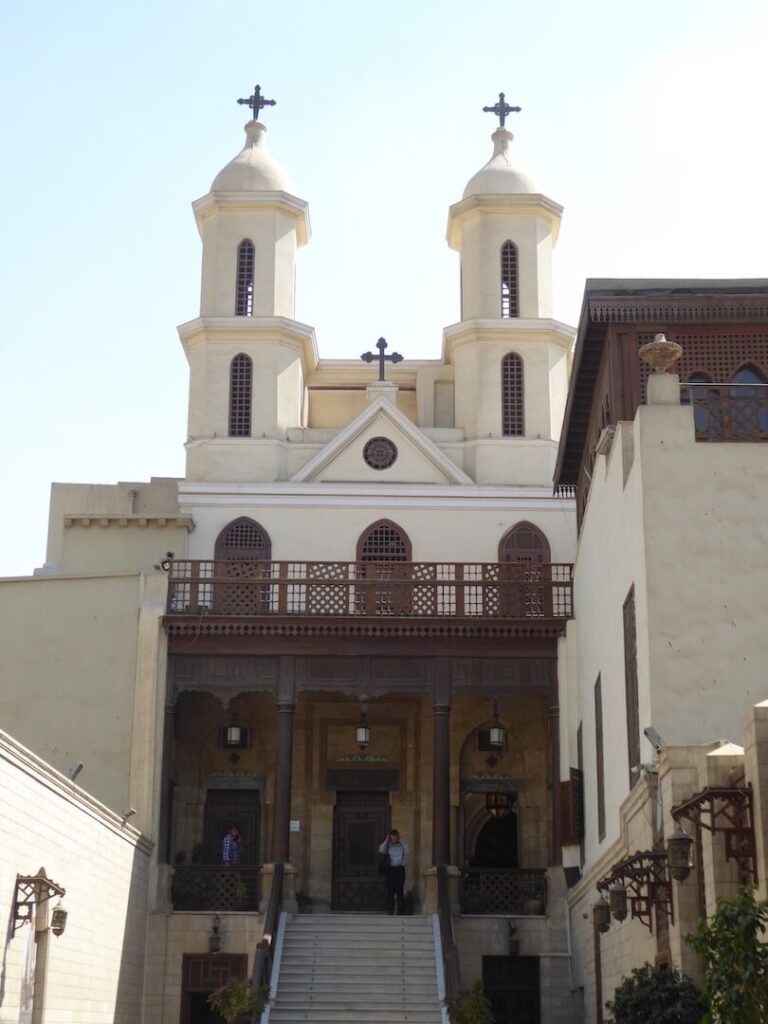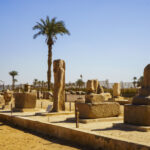Beyond the Great Pyramids and the Sphinx of Giza’s Necropolis, Cairo is home to Islamic Cairo and Coptic Cairo. These areas of the city are so-called for their religious history and the buildings that illustrate Cairo’s rich changing, living history.
Explore the city where Christianity and Islam have co-existed for thousands of years. Located near Giza on the east side of the river Nile, Islamic and Coptic Cairo are a 25-minute car journey away from each other, but couldn’t be more different.
If you would like to visit the rich heritage of Islamic and Coptic Cairo, please get in touch. Our Private Custom Tours of Egypt can be designed to meet your travel desires with any Cairo-based destination you have in mind.
At Literary Tours in Egypt, we bridge the ancient world with the literary one offering visitors a chance to experience Egypt’s majesty through their favourite books.
From the queen of crime fiction, Agatha Christie, to contemporary Egyptian writers including Naguib Mahfouz, we match fictional scenes with real locations on all our tours, such as our Aswan Tours Inspired by Literature.
But, for now, let’s take a look at the contrasting and vast architecture of Islamic and Coptic Cairo.
Explore the Sites of Islamic Cairo
As you explore Islamic Cairo, you’ll understand why Egypt’s capital is often referred to as the ‘City of a Thousand Minarets’. The city has hundreds, if not thousands, of mosques, many of which are open for public visits. Islamic Cairo is where some of the oldest mosques in Egypt are located.
Also called Medieval Cairo or Historic Cairo, Islamic Cairo is the city’s historic area that existed before Cairo’s 19th and 20th-century modern expansion.
There are multiple mosques and ancient sites to explore in this UNESCO World Heritage Site. We’ve highlighted a few for you to virtually enjoy that illustrate the beautiful architectural style that characterises Islamic Cairo.
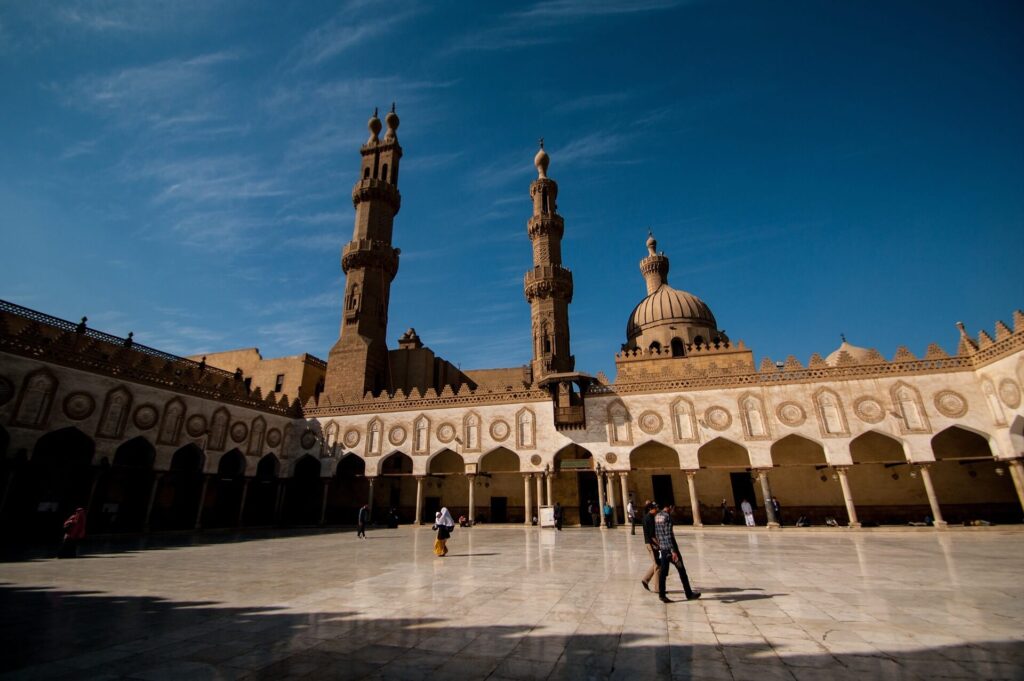
Experience Al-Azhar Mosque in Islamic Cairo
The Al-Azhar Mosque is one of Cairo’s earliest religious buildings. Founded in 970 AD at the centre of the former capital Fatimid Caliphate, the building has seen several architectural additions over the years, giving it a unique appearance and blend of styles.
Al-Azhar is a must-see from three minarets added in the 14th, 15th, and 16th centuries to the madrassa built in 988 AD.
The madrassa is the world’s second-oldest educational institution and the modern campus is one of the most prestigious places to study Sunni theology.
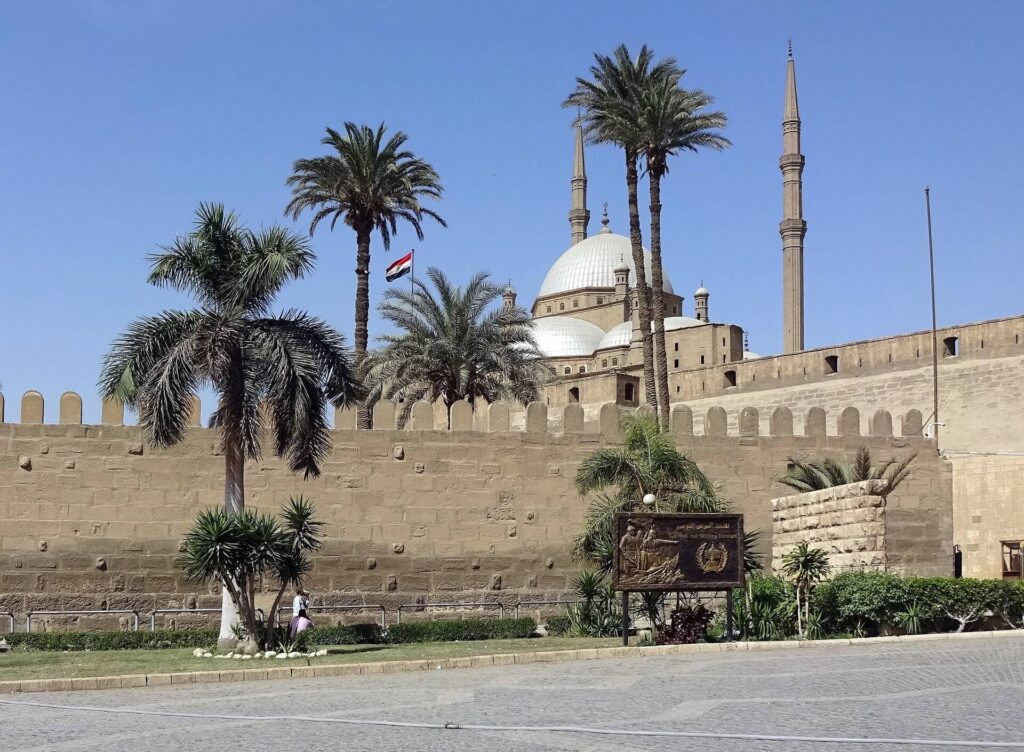

Visit The Citadel of Cairo in Islamic Cairo
The Citadel of Cairo is a medieval Islamic-era fortification built between 1176–1183 under Salah ad-Din — the first sultan of Egypt and Syria. This UNESCO World Heritage Site has a varied history, having been expanded in the 14th century and partly demolished in the 16th century.
The Citadel was also used by the British in their occupation of Egypt in the 20th century, then by the Egyptian army, until it was finally open to the public in 1983. The Citadel was once the central governmental seat in Egypt for almost 700 years, between the 13th and 19th centuries.
Enjoy the Bustle of Islamic Cairo’s Al-Muizz Street
Al-Muizz Street is renowned not only for its artisanal shops and welcoming atmosphere, but it has the largest number of medieval buildings in the Islamic world. It is crammed with monuments alongside craftspeople selling souvenirs and goods.
Known throughout Cairo as an “open-air museum”, the Egyptian government began renovating this area in 1997 to turn it into the treasure trove it is today. Along the street, you can see several key monuments including:
- Bab al-Futuh — or the Gate of Conquests built in the 11th century using stones from ancient Memphis.
- Khan el-Khalili market — this colourful market is the largest souq in Egypt and is full of traditional handicrafts, spices, and jewellery.
- Beshtak Palace — Admire the historic palace and museum, built in the 14th century, and see the beautiful tall ceilings of qa’a (reception hall) for great examples of Islamic architecture.
Discover The Sites of Coptic Cairo
In Christian tradition, it is believed that the Holy Family visited the area now known as Coptic Cairo during the Flight to Egypt, in which many Christians fled from Herod’s reign. The area became a stronghold for Christianity in Egypt historically, even before the Islamic era began.
The area’s churches are some of the oldest in Egypt, dating back to the 4th century. But the area has more than churches. As you’ll see, there are many other ancient architectural sites to explore.
Visit The Hanging Church in Coptic Cairo
The Hanging Church also referred to as al-Muʿallaqa, is so named because it is situated above the gatehouse of the Babylon Fortress, built by the Romans.
The nave is suspended over a passage and the church is accessible by 29 steps leading to the entrance. Inside, look out for the 13 grand pillars representing Jesus and his 12 apostles.
The facade is dated to the 19th century, but the church itself was built in the third century. The Hanging Church is another example of the continually evolving architectural styles reflecting the changing political climate and ruling leaders in Egypt’s past.
Marvel at the Babylon Fortress in Coptic Cairo
The Babylon Fortress is one of the oldest surviving structures in Coptic Cairo and dates back to the Bronze Age. The fortress was built around 30 BC following the arrival of the Roman emperor Augustus and has remained standing since.
Within the fortress walls, you will find several churches, including the Hanging Church and the Coptic Museum (below). This is a brilliant portal into the past and a must-see gateway into Coptic Cairo’s long history.


Take in the Sights at the Coptic Museum in Coptic Cairo
Located in the Babylon Fortress, the Coptic Museum has the largest number of Coptic Christian artefacts in the world. The museum is a great way to ground yourself in the area’s history, which dates back to 1908 when it was founded by Marcus Simaika, an Egyptian Coptic leader.
Inside, you will find over 15,000 objects that show Coptic Christianity through the ages. The artefacts are grouped into mediums, such as stonework, textiles, and manuscripts, which come from the Greek, Roman, Byzantine, and Ottoman periods.
And that brings us to the close of our virtual tour around Islamic and Coptic Cairo! We hope you’ve enjoyed travelling from the comfort of your own home and feel inspired to explore these wonderful destinations in person.
At Literary Tours in Egypt, our customisable tours of Egypt can show you all of Islamic and Coptic Cairo, as well as any other historic sites you want to see. We go beyond Egypt’s capital to explore the river Nile, Luxor, and more on our tours inspired by Egypt-based literature.
If you’re planning to visit Egypt and want to find out more about us, please get in touch! Our local team will be happy to help you curate the trip of your dreams.
